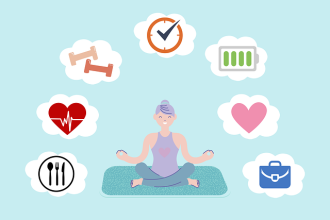Depression is more than just persistent sadness—it affects the entire body. Individuals often report physical symptoms such as fatigue, muscle tension, shallow breathing, or a feeling of heaviness, alongside emotional distress. This mind-body connection is at the heart of Body Psychotherapy, a powerful therapeutic approach that integrates physical awareness and movement into the healing process.
Understanding Depression as a Mind-Body Condition
Traditional models of depression focus primarily on mood, thoughts, and behavior. However, recent research in neuroscience and psychosomatics reveals that emotions are not only processed in the brain but also stored and expressed through the body.
Many people with depression experience:
- Constricted breathing
- Postural collapse (slouched shoulders, bowed head)
- Reduced physical energy
- Muscle tension or numbness
- Lack of embodied presence (feeling disconnected from the body)
Body Psychotherapy works by directly engaging with these physical expressions of emotional pain.
What Is Body Psychotherapy
Body Psychotherapy is a form of integrative therapy that works with both the body and mind simultaneously. It draws from somatic psychology, neuroscience, and trauma-informed practices. Through breath work, movement, physical awareness, and guided touch (where appropriate), clients begin to reconnect with their inner experiences—gently and safely.
Rather than focusing only on “talking through” the depression, this method allows the client to feel and express what words cannot always reach.
How Body Psychotherapy Helps in Depression
1. Restoring the Felt Sense
Many people with depression feel emotionally numb or disconnected. Body-oriented work helps reawaken bodily sensations and emotional awareness, reconnecting clients with a sense of vitality and presence.
2. Releasing Chronic Tension
Depressive states often lead to somatic armoring—habitual tension that the body uses to suppress feelings. Body Psychotherapy works to gently release these holding patterns.
3. Regulating the Nervous System
Through grounding, breathing techniques, and mindful movement, clients learn how to self-regulate, shifting from a frozen or collapsed state into more balanced arousal levels.
4. Reclaiming Movement and Expression
Depression often brings physical stillness and emotional shutdown. Body Psychotherapy uses gentle, guided movements to stimulate internal flow, expression, and agency.
5. Accessing Early Trauma Stored in the Body
For some individuals, unresolved trauma plays a key role in depressive symptoms. Somatic methods offer a way to access and integrate these early experiences without being overwhelmed.
Techniques Commonly used
- Breath awareness and expansion
- Grounding exercises
- Somatic dialogue (noticing and verbalizing body sensations)
- Movement exploration
- Touch therapy (if appropriate and with consent)
- Guided imagery connected to body states
- Voice and sound work (e.g., expressing stuck emotion through tone)
Each session is tailored to the individual, based on their comfort level, symptoms, and therapeutic goals.
How It Complements Other Treatments
Body Psychotherapy can be used:
- Alongside medication, to reduce reliance or enhance response
- In combination with talk therapy (psychodynamic, CBT, etc.)
- As a standalone therapy for those seeking a non-verbal or somatic-focused approach
It’s especially beneficial for individuals who:
- Feel "stuck" in traditional therapy
- Experience depression with strong physical symptoms
- Find it difficult to articulate emotions with words
A Human-Centered Approach to Depression
Body Psychotherapy respects each person as a whole—mind, body, and nervous system. It doesn't force change but invites healing by listening to what the body is already saying.
Depression doesn’t live only in the thoughts—it lives in the breath, the posture, the muscles, and the cells. And it’s there that healing can begin.
Body Psychotherapy can be considered a valuable component of a comprehensive and integrative approach to the treatment of depression. It provides a gentle yet effective method for restoring connection with the body, supporting emotional release, and fostering a renewed sense of vitality.

